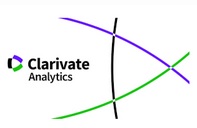Harmonic development scale. An integrative proposal for the evaluation of children´s development.
Supporting Agencies
- Fundación Maternal Crecer en Armonía
Abstract
Professionals interested in the area of psychological assessment are becoming increasingly sensitive towards the need for instruments capable of integrating the systemic and epigenetic character of the developmental process into its design. Most of the proposals put forward in recent decades coincide in considering developmental change as the result of a complex network of transactions between the subject and its developmental contexts at different levels. The Scale of Harmonic Development combines elements sensitive to the dynamism of the ontogenetic process: areas and functions of development which experience generative tensions of quantitative and qualitative change across different levels and stages. These stages, understood as “attractor states –a key concept in the Self-organizing Dynamic Systems Theory–, lose rigidity and integrate variability. The scale provides variables which allow the quantitative dimension (the Average Development Quotient) and the quality of the process of development (the Index of Harmony) to be dealt with at the same time. Initial trials reveal their usefulness as a screening test to serve in child development prevention.
Downloads
References
Abellán, F. J. (2011). Escala de desarrollo armónico: un estudio de validación estructural. Tesis doctoral, Facultad de Psicología, Universidad de Murcia. Recuperado de http://hdl.handle.net/10803/109212
Bayley, N. (1977). Escalas Bayley de desarrollo infantil. Madrid: TEA.
Bluma, S. M., Shearer, M. S., Frohman, A. H. y Hilliard, J. M. (1995). Guía Portage de educación preescolar. Madrid: PSYMTEC.
Bronfenbrenner, U. (1979). The Ecology of Human Development. Cambridge: Harvard University Press. (Traducción castellana: La ecología del desarrollo humano. Barcelona: Ediciones Paidós, 1987).
Castro-Martínez, J., Sierra-Mejía, H. y Flórez-Romero, R. (2012). Una revisión de las relaciones entre los sistemas dinámicos y la psicología del desarrollo. Suma Psicológica, 19(2), 109-130. doi: 10.14349/sumapsi2012.1105
Colunga, E. y Smith, L. B. (2008). Knowledge embedded in process: The selforganization of skilled noun learning. Developmental Science, 11(2), 195-195.
Corbetta, D. y Thelen, E. (2002). Behavioral fluctuations and the development of manual asymmetries in infancy: Contribution of the dynamic systems approach. En S. J. Segalowitz y I. Rapin (Eds.), Handbook of neuropsychology, 8: Child neuropsychology, Parte I. Amsterdam: Elsevier Science Publishing Co.
Cordero, A., Seisdedos, N., De la Cruz, M. V. y González, M. (1996). Escalas McCarthy de aptitudes y Psicomotricidad para niños. Madrid: TEA.
Delval, J. (2002). Vygotski y Piaget sobre la formación del conocimiento. Investigación en la escuela, 48, 13-38.
DeRobertis, E. M. (2011). Existential-humanistic and dynamic systems approaches to child development in mutual encounter. The Humanistic Psychologist, 39, 3-23. doi: 10.1080/08873267.2011.539934
Fausto-Sterling, A., García-Coll, C. y Lamarre, M. (2012a). Sexing the baby: Part 1 What do we really know about sex differentiation in the first three years of life? Social Science & Medicine, 74, 1684-1692. Recuperado de http://dx.doi.org/10.1016/j.socscimed.2011.05.051
Fausto-Sterling, A., García-Coll, C. y Lamarre, M. (2012b). Sexing the baby: Part 2 Applying dynamic systems theory to the emergences of sex-related differences in infants and toddlers. Social Science & Medicine, 74, 1693-1702. Recuperado de http://dx.doi.org/10.1016/j.socscimed.2011.05.051
Fernández Álvarez, E. (1991). Escala Haizea-Llevant. Tabla de desarrollo de 0 a 5 años. Vitoria: Servicio Central de Publicaciones del Gobierno Vasco.
Flavell, J. H. (1963/82). La psicología evolutiva de Jean Piaget. Barcelona: Paidós.
Fogel, A., Lyra, M. C. D. P. y Valsiner, J. (2014). Dynamics and indeterminism in developmental and social processes. Psychology Press.
Frank, T. D., van der Kamp, J. y Savelsbergh, G. J. P. (2010). On a multistable dynamic model of behavioral and perceptual infant development. Developmental Psychobiology, 52(4), 352-371. doi: 10.1002/dev.20431
Frankenburg, W., Dodds, J., Archer, P., Shapiro, H. y Bresnick, M. (1992). The Denver-II: A major revision and restandarization of de Denver Developmental Screening Test. Pediatrics, 89(1), 91-97.
Garcia-Mila, M., Gilabert, S. y Rojo, N. (2011). El cambio estratégico en la adquisición del conocimiento: la metodología microgenética. Infancia y Aprendizaje, 34(2), 169-180. doi: 101174/02137011795377566
García-Tornel, S., García, J. J., Reuter, J., Clow, C. y Reuter, L. (1996). Nuevo método de evaluación del desarrollo psicomotor basado en la información de los padres. Anales Españoles de Pediatría, 44, 448-452.
Guralnick, M. J. (2001). A Developmental Systems Model for early Intervention. Infants and Young Children, 14(2), 1-18.
Gutiérrez, F., Luque, J. L. y García-Madruga, J. A. (2002). Los enfoques dinámicos. El conexionismo y los sistemas evolutivos dinámicos. En J. A. García-Madruga, F. Gutiérrez y N. Carriedo (Eds.), Psicología Evolutiva II, Desarrollo cognitivo y lingüístico, Vol. 1. Madrid: UNED.
Gutiérrez-Martínez, F. (2005). Teorías del desarrollo cognitivo. Madrid: Mac-Graw-Hill Interamericana.
Hainaut, K. (1982). Introducción a la biomecánica. Barcelona: Jims.
Hollenstein, T. (2011). Twenty years of dynamic systems approaches to development: significant contributions, challenges, and future directions. Child Development Perspectives, 5(4), 256-259. doi: 10.1111/j.1750-8606.2011.00210.x
Ireton, H. R. y Thwing, E. J. (1988). Child Development Inventory. Minneapolis, MN: Behaviour Science Systems, Inc.
Josse, D. (1997). Brunet-Lézine revisado. Escala de desarrollo psicomotor de la primera infancia. Madrid: PSYMTEC.
Kozulin, A. (1994). La psicología de Vygotski. Madrid: Alianza
Luque, J. L., Carrillo, M., Alegría, J., Bordoy, S. y López-Zamora, M. (2012). Ventajas del diagnóstico etiológico de la dislexia evolutiva; Informe automatizado a partir de la Batería DIS-ESP. En J. Navarro, M. T. Fernández, F. J. Soto y F. Tortosa (Coords.), Respuestas flexibles en contextos educativos diversos. Murcia. Consejería de Educación, Formación y Empleo.
Lyra, M. C. A. P. y Valsiner, P (2011). Historicity in development: Abbreviation in modern infant communication. Infancia y Aprendizaje, 34(2), 195-203. doi: 101174/021037011795377638
Mareschal, D. y Shultz, T. R. (1996). Generative connectionist networks and constructivist cognitive development. Cognitive Development, 11, 571-603.
Mareschal, D., Johnson, M. H., Sirois, S., Spratling, M. W., Thomas, M. S. C. y Westermann, G. (2007). Neuroconstructivism: How the brain constructs cognition. Oxford: Oxford University Press.
Mateo-García, M. A. (2003). Notas sobre la complejidad en la Psicología. Anales de Psicología, 19(2), 315-326. Recuperado de http://hdl.handle.net/10201/8009
McClelland, J. L. (1989). Parallel distributed processing: implications for cognition and development. En R. G. M. Morris (Ed.), Parallel distributed processing: implications for psychology and neurobiology. Oxford: Oxford University Press.
Newborg, J. (1984). Battelle Developmental Inventory. Rolling Meadows, IL: Riverside Publishing.
Perone, S. y Spencer, J. P. (2014). The co-development of looking dynamics and discrimination performance. Developmental Psychology, 50, 837-852. doi: 10.1037/a0034137
Piaget, J. (1986). La epistemología genética. Madrid: Debate.
Port, R. F. y van Geert, T. (1995). Mind as Motion: Explorations in the Dynamics of Cognition. Cambridge, MA: MIT Press.
Puche, R. y Martí, E. (2011). Metodologías del cambio. Infancia y Aprendizaje, 34, 131-139. doi: 10.1174/021037011795377575
Rumelhart, D., McClelland, J. L. y el grupo PDP (1992). Introducción al procesamiento distribuido en paralelo. Madrid: Alianza.
Sameroff, A. J. (1982). Development and the dialectics: the need for a systems approach. En W. A. Collins (Ed.). Minnea Symposium on Child Psychology, vol 15. Hillsdale NJ: LEA
Sánchez, E. (2010). La lectura en el aula. Qué se hace, qué se debe hacer y qué se puede hacer. Madrid: Graó.
Sandhofer, C. y Smith, L. B. (2004). Perceptual complexity and form class cues in novel word extension tasks: how 4 year old children interpret novel adjectives and count nouns. Developmental Science, 7, 378-388.
Sandhofer, C. y Smith, L. B. (2007). Learning adjectives in the real world: How learning nouns impedes learning adjectives. Language Learning and Development, 3(3), 233-267.
Schöner, G. (2014). Dynamical systems thinking from metaphor to neural theory. En P. C. M. Molenaar, R. M. Lerner y K. M. Newell (eds.), Handbook of developmental systems: Theory and methodology (pp. 188-219). New York, NY: Guilford Publications.
Secadas, F. (1992). Procesos evolutivos y escala observacional del desarrollo. Madrid: TEA.
Sheya, A. y Smith, L. B. (2010). Changing priority maps in 12 to 18 month-olds: An emerging role for object properties. Psychological Bulletin and Review, 17, 22-28.
Siegler, R. S. y Shipley, C. (1995). Variation, selection, and cognitive change. En T. Simon y G. Haldford (Eds.) Developing cognitive competence: New approaches to process modeling (pp. 31-76). Hillsdale, NJ: Erlbaum.
Simmering, V. R. y Perone, S. (2012). Working memory capacity as a dynamic process. Frontiers in Psychology, 3, 567. doi: 10.3389/fpsyg.2012.00567
Smith, L. B. (2003). Different is good: connectionist and dynamic systems theory are complementary emergentist approaches to development. Developmental Science, 6, 434-439.
Smith, L. B. (2005). Cognition as a dynamic system: Principles from embodiment. Developmental Review, 25(3-4), 278-298.
Smith, L. B. (2009). Dynamic systems, sensory-motor processes, and the origins of stability and flexibility. En J. Spencer, M. Thomas y J. McClelland (Eds.), Toward a unified theory of development: Connectionism and dynamic systems theories reconsidered. Oxford: Oxford University Press.
Smith, L. B. y Breazeal, C. (2007). The dynamic lift of developmental process. Developmental Science, 10, 61-68.
Smith, L. B. y Pereira, A. (2009). Shape, action, symbolic play, and words: Overlapping loops of cause and consequence in developmental process. En S. Johnson (Ed.), Neo-constructivism: The new science of cognitive development. Oxford: Oxford University Press.
Smith, L. B. y Thelen, E. (2003). Development as a dynamic system. Trends in Cognitive Science, 7, 343-348.
Spencer, J. P., Austin, A. y Schutte, A. R. (2012). Contributions of dynamic systems theory to cognitive development. Cognitive Development, 27, 401-418. Recuperado de http://dx.doi.org/10.1016/j.cogdev.2012.07.006
Spencer, J. P., Clearfield, M., Corbetta, D., Ulrich, B., Buchanan, P. y Schöner, G. (2006). Moving toward a grand theory of development: In memory of Esther Thelen. Child Development, 77, 1521-1538.
Spencer, J. P. y Thelen, E. (2003). Connectionism and dynamic systems theory: Are these really different approaches to development? Developmental Science, 6, 375-447 (Número especial).
Spencer, J. P., Thomas, M. S. C. y McClelland, J. L. (2009). Toward a unified theory of development: connectionism and dynamic systems theory re-considered. New York, NY: Oxford University Press.
Thelen, E. (1985). Developmental origins of motor coordination: leg movements in human infants. Developmental Psychobiology, 18, 323-333.
Thelen, E. (1989a). Self Organization in developmental processes: can systems processes work? En M. Gunnar y E.
Thelen (Eds.). Systems in Development; the Minnesota Symposia in Child Psychology, Vol 22 (pp.77-117). Hillsdale, NJ: Erlbaum.
Thelen, E. (1989b).The (re)discovery of motor development: Learning new things from an old field. Developmental Psychology, 25, 946-949. doi: 10.1037/0012-1649.25.6.946
Thelen, E. (1992). Development as a dynamic system. Current Directions in Psychological Science, 1(6), 189-193. doi: 10.1111/1467-8721.ep10770402
Thelen, E. (1995). Time-scale dynamics and the development of an embodied cognition. En R. F. Port y T. Van Gelder, (Eds.). Mind as motion: Explorations in the dynamics of cognition. Cambridge, MA: MIT Press.
Thelen, E. y Smith, L. B. (1994). A dynamic system approach to development of cognition and action. Cambridge, MA: MIT Press.
Thelen, E. y Smith, L. B. (1998). Dynamic systems theories. En W. Damon y R. M. Lerner (Eds.), Handbook of Child Psychology, Vol. 1: Theoretical models of human development, (pp. 563-634). New York, NY: John Wiley and Sons, Inc.
Thelen, E. y Bates, E. A. (2003). Connectionism and dynamic systems: Are they really different? Developmental Science, 6, 378-391.
Valsiner, P. (2011). Constructing the vanishing present between the future and the past. Infancia y Aprendizaje, 34(2), 141-150. doi: 101174/021037011795377601.
van Dijk, M. y van Geert, P. (2007). Wobbles, humps and sudden jumps: A case study of continuity, discontinuity, and variability in early language development. Infant and Child Development, 16(7), 7-33.
van Dijk, M. y van Geert, P. (2011). Heuristic techniques for the analysys of variability as a dinamic aspect of change. Infancia y Aprendizaje, 34(2), 151-167. doi: 101174/021037011795377557.
van Geert, P. (1994). Dynamic systems of development: Change between complexity and chaos. New York, NY: Harvester Wheatsheaf.
van Geert, P. (1995). Growth Dynamics in Development. En R. F. Port y T. van Gelder (Eds.) Mind as Motion: exploration in de Dynamics of Cognition (pp.313-338). Cambridge, MS: MIT Press.
van Geert, P. y Steenbeek, H. (2005). Explaining after by before: Basic aspects of a dynamic systems approach to the study of development. Developmental Review, 25, 408-442.
von Bertalanffy, L. (1968). General systems theory: Foundations, development, applications. New York, NY: George Braziller.
Vayer, P. (1980). El equilibrio corporal. Aproximación dinámica a los problemas de actitud y comportamiento. Barcelona: Científico-Médica.
Vygotski, L. S. (1934/95). Pensamiento y lenguaje. Barcelona: Paidós.
Wallon, H. (1968). L´évolution psychologique de l´enfant. París: Armand Colin.
Witherington, D. C. (2007). The dynamic systems approach as metatheory for developmental psychology. Human Development, 50(2-3), 127-153 doi: 10.1159/000100943
Witherington, D. C. (2011). Taking emergence seriously: The centrality of circular causality for dynamic systems approaches to development. Human Development, 54(2), 66-92. doi: 10.1159/000326814
Witherington, D. C. (2014). Self-organization and explanatory pluralism: Avoiding the snares of reductionism in developmental science. Research in Human Development, 11, 22-36. doi: 10.1080/15427609.2014.874763
Witherington, D. C. y Margett, T. E. (2011). How conceptually unified is the dynamic systems approach to the study of psychological development? Child Development Perspectives, 5, 286-290. doi: 10.1111/j.1750-8606.2011.00211.x
Zapf, J. A. y Smith, L. B. (2007). When do children generalize the plural to novel nouns? First Language, 27(1), 53-73.
The works published in this journal are subject to the following terms:
1. The Publications Service of the University of Murcia (the publisher) retains the property rights (copyright) of published works, and encourages and enables the reuse of the same under the license specified in paragraph 2.
© Servicio de Publicaciones, Universidad de Murcia, 2022
2. The works are published in the online edition of the journal under a Creative Commons Reconocimiento-CompartirIgual 4.0 (legal text). You can copy, use, distribute, transmit and publicly display, provided that: i) you cite the author and the original source of publication (journal, editorial and URL of the work), ii) are not used for commercial purposes, iii ) mentions the existence and specifications of this license.
This work is licensed under a Creative Commons Attribution-ShareAlike 4.0 International License.
3. Conditions of self-archiving. Is allowed and encouraged the authors to disseminate electronically pre-print versions (version before being evaluated and sent to the journal) and / or post-print (version reviewed and accepted for publication) of their works before publication, as it encourages its earliest circulation and diffusion and thus a possible increase in its citation and scope between the academic community. RoMEO Color: Green.















